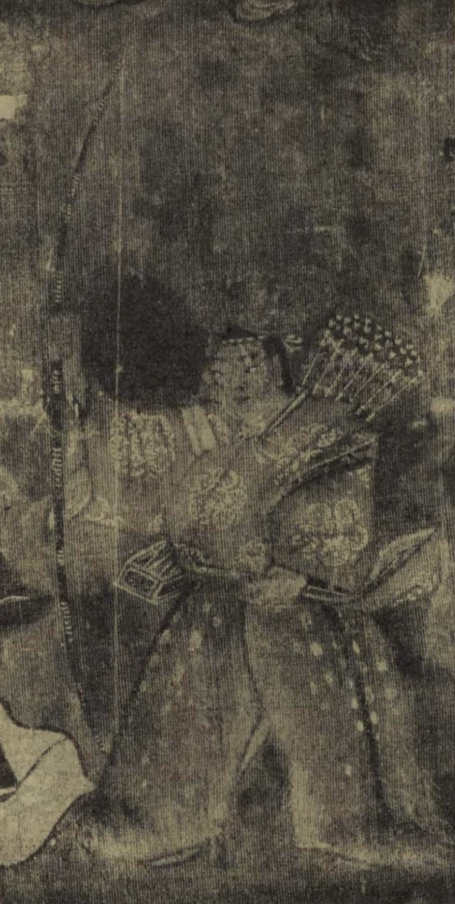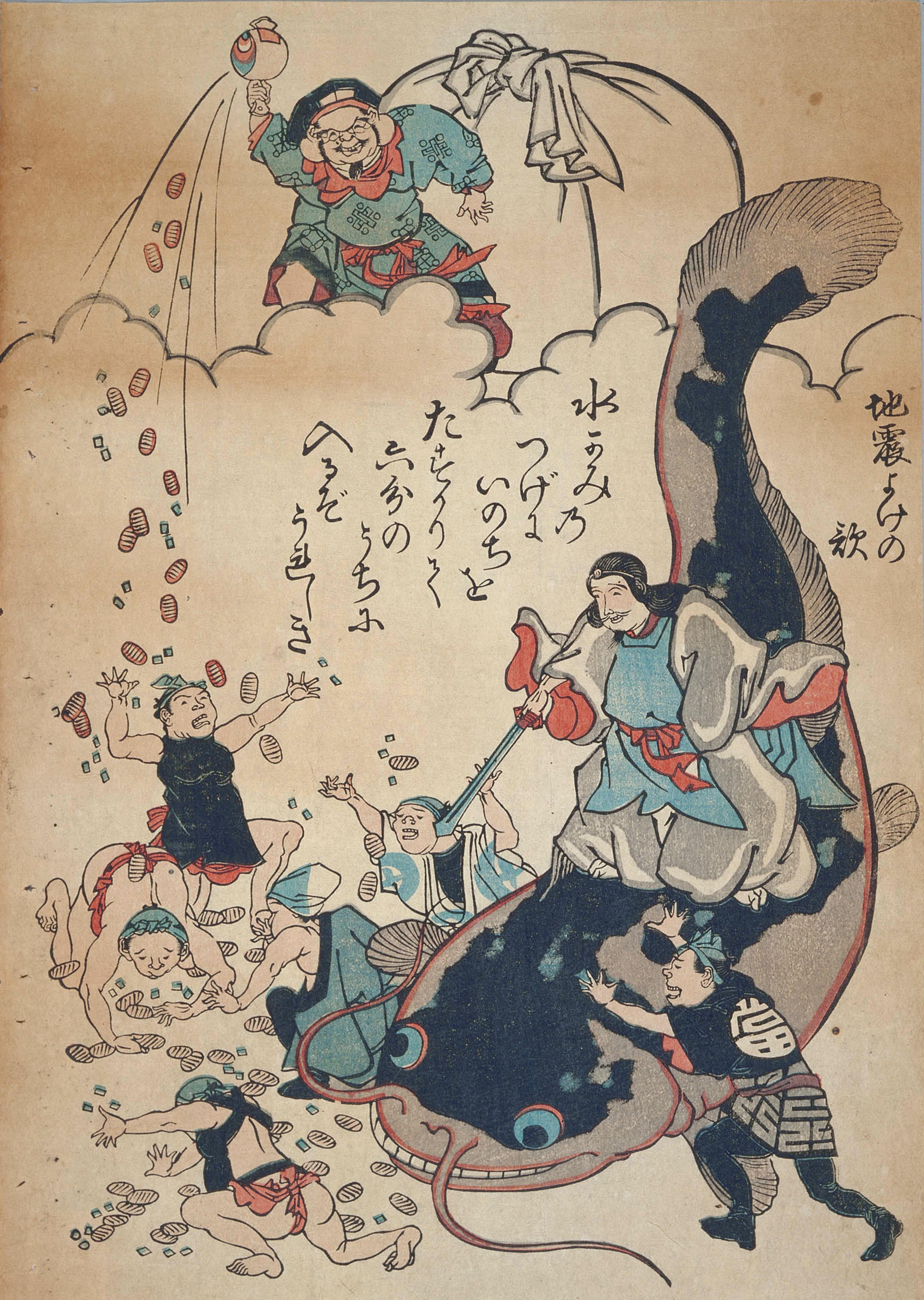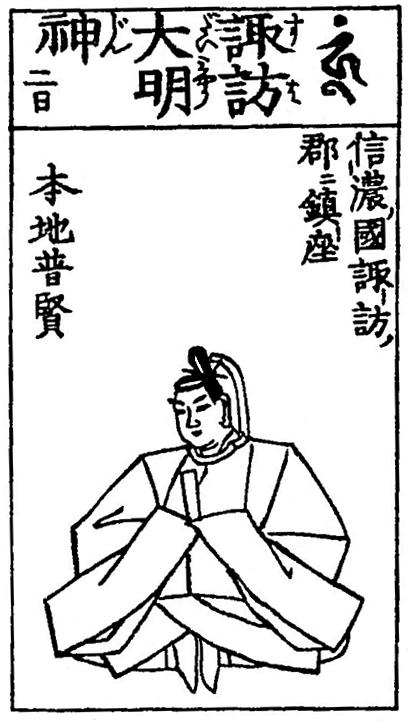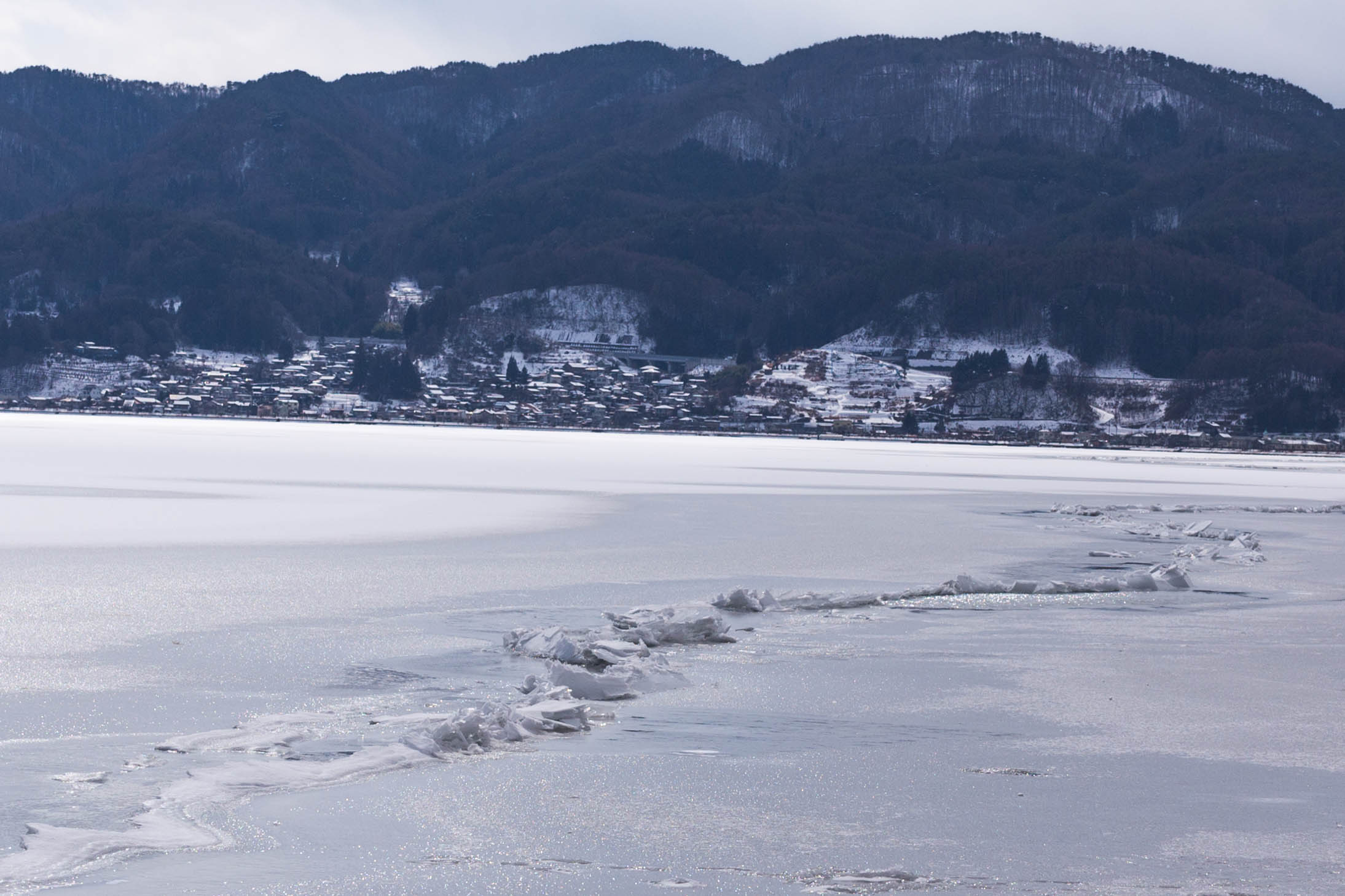|
Takeminakata
Takeminakata (タケミナカタ), also known as Minakatatomi or Takeminakatatomi, is a ''kami'' in Japanese mythology. Also known as or after Suwa Grand Shrine (Suwa Taisha) in Nagano Prefecture (former Shinano Province) in which he is enshrined alongside his consort Yasakatome, Takeminakata is historically worshiped as a god of wind, water and agriculture, as well as a patron of hunting and warfare, in which capacity he enjoyed a particularly fervent cult from various samurai clans during the medieval period such as the Hōjō or the Takeda. Takeminakata was also held to be the mythical ancestor of certain families who once served at the shrine as priests, foremost among them being the Suwa clan, the high priests of the Upper Shrine of Suwa who were also revered as living vessels of the god. Whereas in the '' Kojiki'' (ca. 712 CE) and later derivative accounts, Takeminakata appears as one of the sons of the god Ōkuninushi who fled to Lake Suwa after being defeated by t ... [...More Info...] [...Related Items...] OR: [Wikipedia] [Google] [Baidu] |
Suwa-taisha
, historically also known as Suwa Shrine (諏訪神社 ''Suwa-jinja'') or , is a group of Shinto shrines in Nagano Prefecture, Japan. The shrine complex is the ''ichinomiya'' of former Shinano Province and is considered to be one of the oldest shrines in existence, being implied by the '' Nihon Shoki'' to already stand in the late 7th century. Kanpei-taisha Overview The entire Suwa shrine complex consists of four main shrines grouped into two sites: the Upper Shrine or ''Kamisha'' (上社), comprising the and the , and the Lower Shrine or ''Shimosha'' (下社), comprising the ''Harumiya'' (春宮, spring shrine) and the ''Akimiya'' (秋宮, autumn shrine). The Upper Shrine is located on the south side of Lake Suwa, in the cities of Chino and Suwa, while the Lower Shrine is on the northern side of the lake, in the town of Shimosuwa. In addition to these four main shrines, some sixty other auxiliary shrines scattered throughout the Lake Suwa area (ranging from miniature st ... [...More Info...] [...Related Items...] OR: [Wikipedia] [Google] [Baidu] |
Ōkuninushi
Ōkuninushi ( historical orthography: ''Ohokuninushi''), also known as Ō(a)namuchi (''Oho(a)namuchi'') or Ō(a)namochi (''Oho(a)namochi'') among other variants, is a ''kami'' in Japanese mythology. He is one of the central deities in the cycle of myths recorded in the '' Kojiki'' (ca. 712 CE) and the '' Nihon Shoki'' (720 CE) alongside the sun goddess Amaterasu and her brother, the wild god Susanoo, who is reckoned to be either Ōkuninushi's distant ancestor or father. In these texts, Ōkuninushi (Ōnamuchi) is portrayed as the head of the ''kunitsukami'', the gods of the earth, and the original ruler of the terrestrial world, named Ashihara-no-Nakatsukuni (葦原中国, the "Central Land of Reed Plains"). When the heavenly deities (''amatsukami'') headed by Amaterasu demanded that he relinquish his rule over the land, Ōkuninushi agreed to their terms and withdrew into the unseen world (幽世, ''kakuriyo''), which was given to him to rule over in exchange. Amaterasu's grand ... [...More Info...] [...Related Items...] OR: [Wikipedia] [Google] [Baidu] |
Suwa Clan
The , also known as the Jin or Miwa clan (神氏, ''Miwa uji / Miwa-shi'' or ''Jinshi'') was a Japanese '' shake'' and samurai family. Originating from the area encompassing Lake Suwa in Shinano Province (modern-day Nagano Prefecture), it was originally a family of priests who served at the Upper Shrine of Suwa located on the southwestern side of the lake. By the Kamakura period, it thrived as a prominent samurai clan with close ties to the shogunate. Surviving the fall of both the Kamakura shogunate and the Southern Imperial Court which it supported, its feud with local rival clans, and frequent clashes with its neighbor in Kai, the Takeda clan, during the Sengoku period (which ended in the extinction of the main family), by the Edo period the clan had split into two branches: one ruling the Suwa Domain of Shinano as ''daimyō'', with the other continuing to serve as priests of Suwa Shrine until the Meiji period. Ancestry In legend Although the Suwa, which was the high p ... [...More Info...] [...Related Items...] OR: [Wikipedia] [Google] [Baidu] |
Takemikazuchi
is a deity in Japanese mythology, considered a god of thunder and a sword god. He also competed in what is considered the first sumo wrestling match recorded in history. He is otherwise known as "The ''kami'' of Kashima"" (Kashima-no-kami), the chief deity revered in the Kashima Shrine at Kashima, Ibaraki (and all other subsidiary Kashima shrines). In the ''namazu-e'' or catfish pictures of the Edo period, Takemikazuchi/Kashima is depicted attempting to subdue the giant catfish supposedly dwelling at the of the Japanese landmass and causing its earthquakes. Forms of the name In the ''Kojiki'', the god is known as Takemikazuchi-no-o no kami (建御雷之男神 – "Brave Mighty Thunderbolt Man").Heldt, Gustav. ''The Kojiki: An Account of Ancient Matters''. Columbia University Press, 2014. He also bears the alternate names and .『古事記』text p. 27/ mod. Ja. tr. p.213 Birth of the gods In the Kamiumi ("birth of the gods") episodes of the ''Kojiki'', the god of creation I ... [...More Info...] [...Related Items...] OR: [Wikipedia] [Google] [Baidu] |
Kojiki
The , also sometimes read as or , is an early Japanese chronicle of myths, legends, hymns, genealogies, oral traditions, and semi-historical accounts down to 641 concerning the origin of the Japanese archipelago, the , and the Japanese imperial line. It is claimed in its preface to have been composed by Ō no Yasumaro at the request of Empress Genmei in the early 8th century (711–712), and thus is usually considered to be the oldest extant literary work in Japan. The myths contained in the as well as the are part of the inspiration behind many practices. Later, they were incorporated into Shinto practices such as the purification ritual. Composition It is believed that the compilation of various genealogical and anecdotal histories of the imperial (Yamato) court and prominent clans began during the reigns of Emperors Keitai and Kinmei in the 6th century, with the first concerted effort at historical compilation of which we have record being the one made in 620 under ... [...More Info...] [...Related Items...] OR: [Wikipedia] [Google] [Baidu] |
Myōjin
Myōjin (明神 'shining deity', 'illuminating deity', or 'apparent deity') or Daimyōjin (大明神 'great shining/apparent deity') was a title historically applied to Japanese (Shinto) deities (''kami'') and, by metonymy, their shrines. The term is thought to have been derived from ''myōjin'' (名神 'notable deity'), a title once granted by the imperial court to ''kami'' deemed to have particularly impressive power and virtue and/or have eminent, well-established shrines and cults. This term is first attested in the '' Shoku Nihongi'', where offerings from the kingdom of Bohai (Balhae) are stated to have been offered to "the eminent shrines (名神社 ''myōjin-sha'') in each province" in the year 730 ( Tenpyō 2). An epithet homophonous with this imperially bestowed title, "shining/apparent ''kami''" (written with different Chinese characters), was in popular usage from around the Heian period up until the end of the Edo period, coexisting with titles with more explicit Bu ... [...More Info...] [...Related Items...] OR: [Wikipedia] [Google] [Baidu] |
List Of War Deities
A war god in mythology associated with war, combat, or bloodshed. They occur commonly in both monotheistic and polytheistic religions. Unlike most gods and goddesses in polytheistic religions, monotheistic deities have traditionally been portrayed in their mythologies as commanding war in order to spread religion. (The intimate connection between "holy war" and the "one true god" belief of monotheism has been noted by many scholars, including Jonathan Kirsch in his book ''God Against The Gods: The History of the War Between Monotheism and Polytheism'' and Joseph Campbell in ''The Masks of God, Vol. 3: Occidental Mythology''.) The following is a list of war deities: North Africa Egyptian *Anhur, god of war, not a native god * Bast, cat-headed goddess associated with war, protection of Lower Egypt and the pharaoh, the sun, perfumes, ointments, and embalming *Horus, god of the king, the sky, war, and protection *Maahes, lion-headed god of war *Menhit, goddess of war, "she wh ... [...More Info...] [...Related Items...] OR: [Wikipedia] [Google] [Baidu] |
Suwa Daimyōjin Ekotoba
The ''Suwa Daimyōjin Ekotoba'' (諏方大明神画詞 or 諏訪大明神絵詞 "Illustrated Record of Suwa Daimyōjin (Shrine)"), also known as ''Suwa Daimyōjin Go-engi Shidai'' (諏訪大明神御縁起次第 "Order of Legends (''Engi'') of Suwa Daimyōjin (Shrine)") or ''Suwa(-sha) Engi Emaki'' (諏方(社)縁起絵巻 "Illustrated Legends of Suwa (Shrine)"), was a twelve (originally ten) volume set of ''emakimono'' or painted handscrolls completed in 1356 (Enbun 1),Suwa Shishi Hensan Iinkai, ed. (1995). p. 814. during the Nanboku-chō period. Originally describing and depicting legends concerning the Suwa Grand Shrine in Shinano Province (modern-day Nagano Prefecture) and its deity as well as its various religious festivals as performed during the Middle Ages, the original scrolls containing the illustrations were eventually lost, with only the text being preserved in various manuscripts. Historical overview The ''Ekotoba'' was created under the supervision of Suwa (or K ... [...More Info...] [...Related Items...] OR: [Wikipedia] [Google] [Baidu] |
Lake Suwa
is a lake in the Kiso Mountains, in the central region of Nagano Prefecture, Japan. Geography The lake is the source of the Tenryū River. It ranks 24th in lake water surface area in Japan. The cities of Suwa and Okaya and the town of Shimosuwa are located on the shores of Lake Suwa. Omiwatari Lake Suwa is the site of a natural phenomenon known as the , large cracks that form in the winter across the surface of the frozen lake. A vertical temperature gradient results in ice pressure ridges forming in the surface ice, reaching heights of or more. Local Shinto tradition holds that the ridges are formed by the gods crossing the lake when traveling between the various buildings of the Suwa Grand Shrine. Folklore says it is the guardian god of Suwa, Takeminakata-no-kami, leaving his sanctuary to meet with his wife, the goddess , joining the opposite bank by walking on frozen water. The record of this crossing is the oldest-known human-observed climate record. This record has ... [...More Info...] [...Related Items...] OR: [Wikipedia] [Google] [Baidu] |
Kotoshironushi
, also known as is a Shinto ''kami''. In the ''Kojiki'', Kotoshironushi is the son of Ōkuninushi, the earthly deity of Izumo province. When the heavenly deities sent Takemikazuchi to conquer Izumo, Ōkuninushi deferred the decision over whether to resist to his two sons. Kotoshironushi, who had been fishing at the time of Takemikizuchi's arrival, agreed to accept the rule of the heavenly gods, surrendered his spear and left Izumo. His brother Takeminakata fought with Takemikazuchi and was defeated. Kotoshironushi is the principal deity of the Asuka shrine, and is associated with the god Ebisu. In mythology, he was an adviser to Empress Jingū during her invasion of Korea, and was one of the eight deities charged with protecting the Imperial Court. His daughter Himetataraisuzuhime became the consort of Emperor Jimmu was the legendary first emperor of Japan according to the '' Nihon Shoki'' and '' Kojiki''. His ascension is traditionally dated as 660 BC.Kelly, Charles F"Kofun ... [...More Info...] [...Related Items...] OR: [Wikipedia] [Google] [Baidu] |
India
India, officially the Republic of India (Hindi: ), is a country in South Asia. It is the seventh-largest country by area, the second-most populous country, and the most populous democracy in the world. Bounded by the Indian Ocean on the south, the Arabian Sea on the southwest, and the Bay of Bengal on the southeast, it shares land borders with Pakistan to the west; China, Nepal, and Bhutan to the north; and Bangladesh and Myanmar to the east. In the Indian Ocean, India is in the vicinity of Sri Lanka and the Maldives; its Andaman and Nicobar Islands share a maritime border with Thailand, Myanmar, and Indonesia. Modern humans arrived on the Indian subcontinent from Africa no later than 55,000 years ago., "Y-Chromosome and Mt-DNA data support the colonization of South Asia by modern humans originating in Africa. ... Coalescence dates for most non-European populations average to between 73–55 ka.", "Modern human beings—''Homo sapiens''—originated in Africa. Then, int ... [...More Info...] [...Related Items...] OR: [Wikipedia] [Google] [Baidu] |
Honji Suijaku
The term in Japanese religious terminology refers to a theory widely accepted until the Meiji period according to which Indian Buddhist deities choose to appear in Japan as native ''kami'' to more easily convert and save the Japanese.Breen and Teeuwen (2000:95) The theory states that some ''kami'' (but not all) are local manifestations (the , literally, a "trace") of Buddhist deities (the , literally, "original ground").Satō Masato (2007) The two entities form an indivisible whole called ''gongen'' and in theory should have equal standing, but this was not always the case. In the early Nara period, for example, the ''honji'' was considered more important and only later did the two come to be regarded as equals.Basic Terms of Shinto During the late Kamakura period it was proposed that the ''kami'' were the original deities and the buddhas their manifestations (see the ''Inverted honji suijaku'' section below). The theory was never systematized but was nonetheless very pervasive an ... [...More Info...] [...Related Items...] OR: [Wikipedia] [Google] [Baidu] |





.png)




